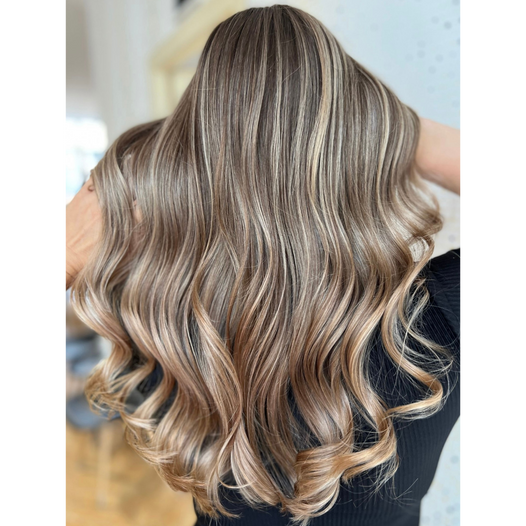
Texturised and Relaxed Hair: Care Routine, and Beneficial Ingredients To Seek

Chemically treated hair refers to hair that has been altered to enhance its natural texture, style, or appearance. Some of the notable treatments are, relaxers, texturisers, keratin treatment, perms, bleach, and thermal reconditioning. All of which requires special care and attention to keep it healthy, moisturized, and resilient. By following a consistent maintenance routine that focuses on hydration, gentle cleansing, deep conditioning, and minimizing heat and manipulation, you can maintain beautiful, chemically treated hair.
We have provided a guide below and advice that you focus on your individual hair needs and tailor the routine accordingly.
Post-Care:
- Follow the recommended waiting period before washing or manipulating your hair.
- Use a neutralizing shampoo to stop the chemical process and restore the pH balance of your hair.
- Deep condition your hair after each treatment to restore moisture and repair any damage caused by the chemical process.
Moisture is Key:
- Chemically treated hair tends to be drier than its natural state so maintaining adequate moisture levels is crucial. Use hydrating shampoos and conditioners specifically formulated for textured hair and follow up with a leave-in conditioner to lock in moisture. Deep conditioning treatments once or twice a month can provide an extra boost of hydration.
- Seal in moisture with natural oils such as jojoba oil, coconut oil, or argan oil to keep your hair hydrated, prevent moisture loss, dryness and frizz.
Gentle Cleansing:
- Use a sulfate-free shampoo that is specifically formulated for chemically treated hair. Sulfates can strip the hair of its natural oils and cause dryness.
- Avoid excessive washing to prevent over-drying your hair. Aim to wash your hair every 1-2 weeks or as needed.
- Consider co-washing (washing with conditioner) between shampoo sessions to refresh and hydrate the hair without stripping away moisture.
Conditioning and Deep Conditioning:
- Regularly use a moisturizing conditioner after shampooing to restore moisture and improve manageability.
- Incorporate deep conditioning treatments into your routine at least once a week to provide intense hydration and nourishment. Consider using a plastic cap or applying heat to enhance product absorption.
Heat Styling:
- Protect your hair with a heat protectant spray or serum before using hot tools.
- Use a moderate heat setting and avoid excessive heat to prevent damage and maintain the integrity of the hair.
Protective Styling:
- Embrace protective hairstyles such as buns, braids, twists, or updos to minimize manipulation, promote hair growth and reduce the risk of breakage.
- Avoid tight hairstyles that can cause tension or pulling on the hair especially across the forehead.
- Additionally, using satin or silk hair accessories, like scrunchies or bonnets, can help retain moisture and prevent friction.
Regular Trims:
- Trimming your hair regularly is crucial to maintain healthy ends and prevent split ends. Aim for a trim every 8-12 weeks or as needed to keep the hair looking neat and to prevent breakage from traveling up the hair shaft.
Avoid Overprocessing:
- Be mindful of over-processing the hair with additional chemical treatments. Excessive use of relaxers or other texturizing methods can lead to weakened hair and breakage. Allow for proper recovery time between treatments and consult with a professional stylist to ensure safe and healthy application.
Additional Care for Texturised Hair
- Texturized hair can be prone to tangling, so it's important to detangle with care. Start with damp hair and use a wide-toothed comb or fingers to gently detangle from ends to roots. Apply a detangling product or conditioner to ease the process and minimize breakage.
It's important to note that chemical treatments can have varying effects on different hair types and textures, and the results may vary from person to person. It is essential to approach these treatments with caution, considering potential risks, proper application, and diligent aftercare. Seek consultation with a professional stylist for further guidance and to achieve your desired results while maintaining the health and integrity of your hair.









Leave a comment